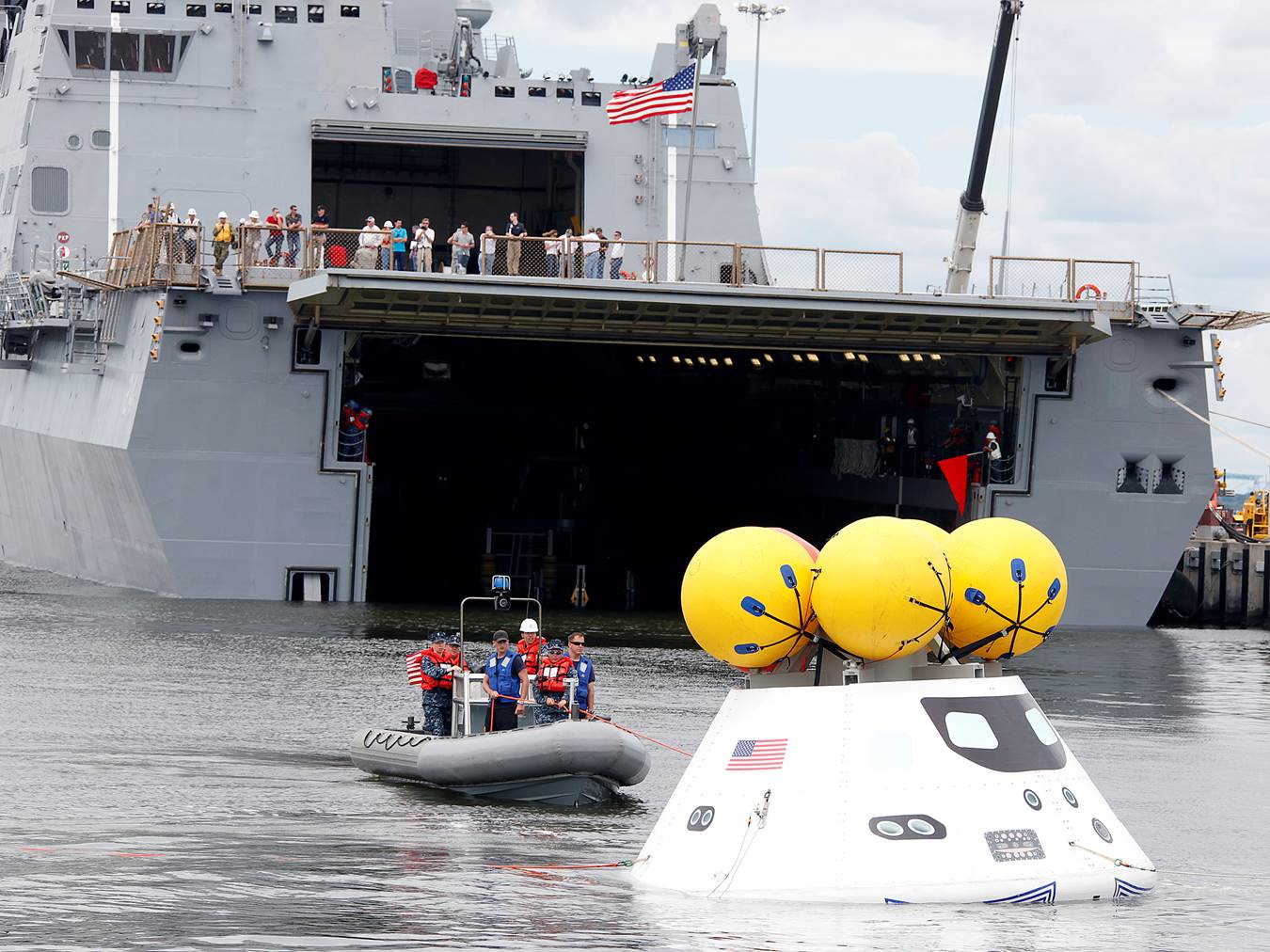
Sailors (and guests, courtesy of a NASA Social) got to experience a touch of Apollo’s golden days on Thursday, Aug. 15, as a strangely familiar sight bobbed in the water near Norfolk Naval Station’s Pier 12. On this day, NASA’s Orion Multi-Purpose Crew Vehicle, which is a 16-foot, four-person upgrade of the Apollo design, was recovered into the well deck of the USS Arlington (LPD 24) during a stationary recovery test. This began what is described as a “historic” partnership between NASA and the Department of Defense, echoing the era of spaceflight when capsules were solely recovered by naval vessels.
This recovery test was the first of many that will allow the Navy and NASA to develop and perfect key objectives in recovering Orion at sea, harnessing ships’ personnel, hardware, and procedural knowledge before the capsules’ test flights.
The USS Arlington is an LPD 17-class ship, an amphibious transport dock. It has the ability to launch helicopters, launch and recover smaller boats, and has three-dimensional air search radar. In addition, it boasts advanced medical facilities, making its class of ships ideal for recovering manned space vehicles and their astronaut inhabitants.
The USS Arlington, despite being commissioned last year, already has a spaceflight legacy. Its predecessor in name, a communications relay ship, assisted in the Apollo 8 recovery in December 1968 and the Apollo 11 recovery in 1969.
The U.S. Navy continues its rich spaceflight heritage with its involvement in the Orion recovery efforts. Aside from being directly involved with Mercury, Gemini, and Apollo recovery in the 1960s, many key players in spaceflight history—including the first American in space and moonwalker, Alan Shepard; first man on the Moon, Neil Armstrong; and first space shuttle commander, John Young—were either naval officers or veterans. The Navy also has a strong presence in the world of unmanned spaceflight. More recently, on July 19, the service branch’s heavyweight MUOS-2 communications satellite was launched from Cape Canaveral Air Force Station’s Complex 41 by an Atlas V rocket, enhancing the ability for all military personnel to stay connected.
The first Orion test flight is scheduled to take place in September 2014. The capsule is designed to take human begins beyond low-Earth orbit (LEO) into deep space missions, encompassing asteroid, lunar, and Martian exploration. And when Orion splashes down, the U.S. Navy will be there to fetch it.
Some information for this article was sourced from the Navy’s official blog, Navy Live.
Want to keep up-to-date with all things space? Be sure to “Like” AmericaSpace on Facebook and follow us on Twitter:@AmericaSpace



